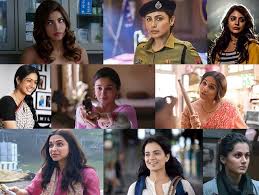Discover how Indian thrillers are breaking stereotypes by reimagining heroes and villains. Learn how these narratives reflect modern complexities and challenge traditional roles in cinema.
Indian thrillers have long enthralled audiences with gripping plots, suspenseful narratives, and iconic characters. Traditionally, heroes were the epitome of righteousness, and villains embodied absolute evil. However, contemporary Indian thrillers are shattering these archetypes, portraying characters that blur the lines between good and evil. This evolution mirrors societal changes and demands a closer look at how these narratives redefine morality, power, and identity.
The Traditional Archetypes: A Look Back
Heroes in Classic Indian Thrillers
In the golden era of Indian cinema, heroes were portrayed as moral paragons—selfless, brave, and just. Films like Sholay (1975) presented characters like Jai and Veeru, who upheld justice despite personal sacrifices. Their motivations were clear, and their actions left little room for moral ambiguity.
Villains: The Quintessential Evil
Villains of classic Indian thrillers were larger-than-life figures, often depicted with exaggerated malevolence. Characters like Gabbar Singh from Sholay and Mogambo from Mr. India (1987) became cultural icons, representing unambiguous evil.
The Shift: Blurring the Lines Between Good and Evil
Societal Changes Reflected in Cinema
As Indian society evolves, so do its cinematic narratives. Today’s audience seeks depth and relatability in characters. Thrillers like Drishyam (2015) and Andhadhun (2018) have redefined heroes and villains by introducing morally complex characters who operate in shades of grey.
Anti-Heroes and Grey Protagonists
Modern thrillers often feature protagonists with flaws, such as Ajay Devgn’s character in Drishyam, who manipulates the truth to protect his family. These anti-heroes challenge traditional notions of morality and force viewers to question their own ethical boundaries.
Villains with Depth
Villains in contemporary Indian thrillers are no longer one-dimensional. Take Sacred Games (2018), where Ganesh Gaitonde’s character oscillates between a ruthless criminal and a tormented soul. These layered portrayals humanize antagonists, making them more relatable and intriguing.
Breaking Stereotypes: Key Themes in Modern Indian Thrillers
Representation of Power Dynamics
Films like Article 15 (2019) delve into societal hierarchies, highlighting systemic oppression and power struggles. The heroes in these narratives are not invincible saviors but flawed individuals battling a corrupt system.
Gender Roles Reimagined
Indian thrillers are also redefining gender roles. Movies like Kahaani (2012) and NH10 (2015) feature strong female protagonists who defy traditional expectations, proving that heroism isn’t limited by gender.

Psychological Depth
The psychological aspect of characters has become a cornerstone of modern thrillers. Films such as Tumbbad (2018) explore greed and human frailty, while Badla (2019) keeps audiences guessing about motivations and culpability.
Impact on Audience Perception
Increased Engagement
By introducing complexity, Indian thrillers create more engaging narratives that resonate with audiences. Viewers are no longer passive spectators but active participants, constantly analyzing characters and their choices.
Challenging Morality
These films challenge conventional moral frameworks, compelling audiences to confront uncomfortable truths about human nature and society.
The Role of OTT Platforms in Redefining Narratives
Expanding Horizons
OTT platforms like Netflix, Amazon Prime, and Hotstar have played a pivotal role in pushing boundaries. Shows like Paatal Lok and Mirzapur explore themes of morality, justice, and survival in nuanced ways, reaching global audiences.
Diverse Storytelling
The rise of digital platforms has enabled creators to experiment with unconventional narratives, free from the constraints of mainstream cinema.
What Lies Ahead for Indian Thrillers?
Embracing Complexity
The future of Indian thrillers lies in embracing even more intricate character arcs and storylines. As societal norms continue to evolve, so will the portrayal of heroes and villains.
Global Appeal
By integrating universal themes with uniquely Indian contexts, these thrillers are poised to capture international attention, further elevating Indian cinema on the global stage.
Indian thrillers are undergoing a transformative journey, breaking stereotypes and redefining traditional roles of heroes and villains. This shift reflects a broader cultural evolution, offering stories that are both entertaining and thought-provoking. As these narratives continue to challenge conventions, they promise a more inclusive and complex portrayal of human nature.
FAQs
Why are heroes and villains in Indian thrillers changing?
This change reflects societal evolution and audience demand for more relatable, complex characters.
Which Indian thriller best represents this shift?
Movies like Drishyam, Andhadhun, and series like Sacred Games exemplify this trend.
How have OTT platforms influenced Indian thrillers?
OTT platforms provide creative freedom, allowing storytellers to explore unconventional narratives and complex characters.
Are there strong female protagonists in Indian thrillers?
Yes, films like Kahaani and NH10 showcase powerful female leads challenging traditional gender roles.
What’s next for Indian thrillers?
Expect more globally appealing stories with deeper psychological and moral complexities.
